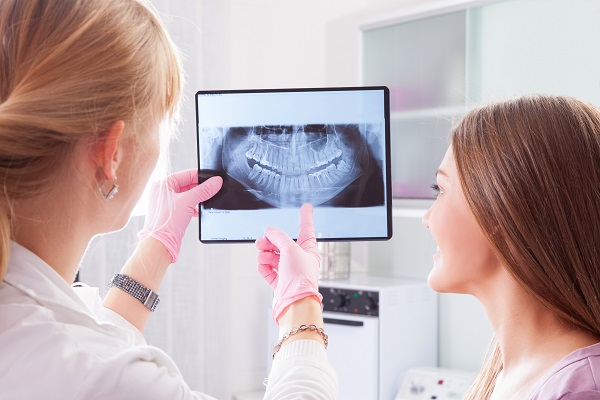Oral Cancer Screening During Dental Exam

While many people already know that it is important to visit the dentist twice a year for a professional cleaning and dental exam, not everyone knows that many dentists check for more than just cavities and gum disease. In addition to examining the teeth and gums, it has become standard for dentists to inspect the mouth and surrounding area for any signs of oral cancer. Continue reading to learn more about the symptoms, risk factors and treatment of oral cancers and discover what a dentist looks for during a screening.
Why dentists check for oral cancer during a dental exam
According to the National Institutes of Health, oral cancers are the sixth most common type of cancer in the world, with around 37,000 diagnoses of the condition in the United States each year. Since the five-year survival rate of oral cancer is as high as 75% when detected early, getting screened regularly is essential. Fortunately, oral cancer is often easily detected by simply examining the mouth and surrounding areas. Since dentists already examine patients’ mouths at least twice a year, a dental exam is a great time to check the mouth for cancer and make an early diagnosis.
What does the dentist look for?
Oral cancer can develop in several areas of the mouth and often appears as a sore that will not go away, a white or red patch on the inside of the mouth or a lump in the neck. The dentist will visually examine the inside of the mouth for any of these signs and feel around with gloves for any bumps. The dentist might also feel under the patient’s chin, jaw and neck for abnormalities. As part of the screening, the dentist might also ask about other symptoms of oral cancer:
- Pain or numbness in the mouth
- Difficulty moving the jaw or chewing
- Bad breath that will not go away
- Soreness or discomfort of the throat
- Weight loss
- Swelling in the jaw
- Voice changes
Oral cancer diagnosis and treatment
If the dentist has any suspicions of oral cancer, they will likely perform a biopsy to further test the tissue or refer the patient to a doctor for further testing. If the biopsy sample reveals that the tissue is cancerous, an endoscopy or imaging test can be used to determine the extent.
Depending on the type of cancer found, the location and the stage, there are several types of treatments used to treat oral cancers. Radiation and chemotherapy can be used to kill cancer cells in addition to targeted drug therapy. For people with more advanced cancer, immunotherapy could be prescribed. Surgery may be required to remove a tumor or affected lymph nodes.
Conclusion
While most dentists already include oral cancer screening in a routine dental exam, it is a good idea for patients to ask their dentists to make sure, as early detection is key. In addition to practicing good oral hygiene habits, it is important that patients are aware of the health of the entire mouth and check periodically for any abnormalities.
Request an appointment here: https://www.mytotaldentistry.com or call McCarthy Dentistry at (740) 546-5178 for an appointment in our Marietta office.
Check out what others are saying about our services on Yelp: Read our Yelp reviews.
Recent Posts
A tooth extraction can improve your dental health. The dentist can assess the tooth and see if it is still repairable. If not, then the dentist will remove it. Knowing more about tooth removal can help you prepare for the procedure. Here are some tooth extraction questions you can ask your general dentist on consultation…
Tooth extraction is a common dental procedure where a dentist removes a tooth from its socket in the jawbone. While it may seem intimidating, these procedures are often necessary to maintain oral health and prevent further complications. Here are the two types of tooth extractions that dentists use to improve your smile and overall health.Simple…
A dental bridge is a tried-and-true way to replace missing teeth, restore chewing function, and protect remaining teeth from shifting. Modern materials, precise digital planning, and evidence-based protocols allow a bridge to blend seamlessly with surrounding teeth and support the health of the smile. With the right bridge design and care routine, patients can experience…
Tooth extractions are common dental procedures performed by general dentists. They can be a result of decay, disease, or a fracture. While the dentist may introduce it to preserve oral health, it is important to know what to expect during and after the operation.There are two types of tooth extractions, namely simple and surgical. Most…


